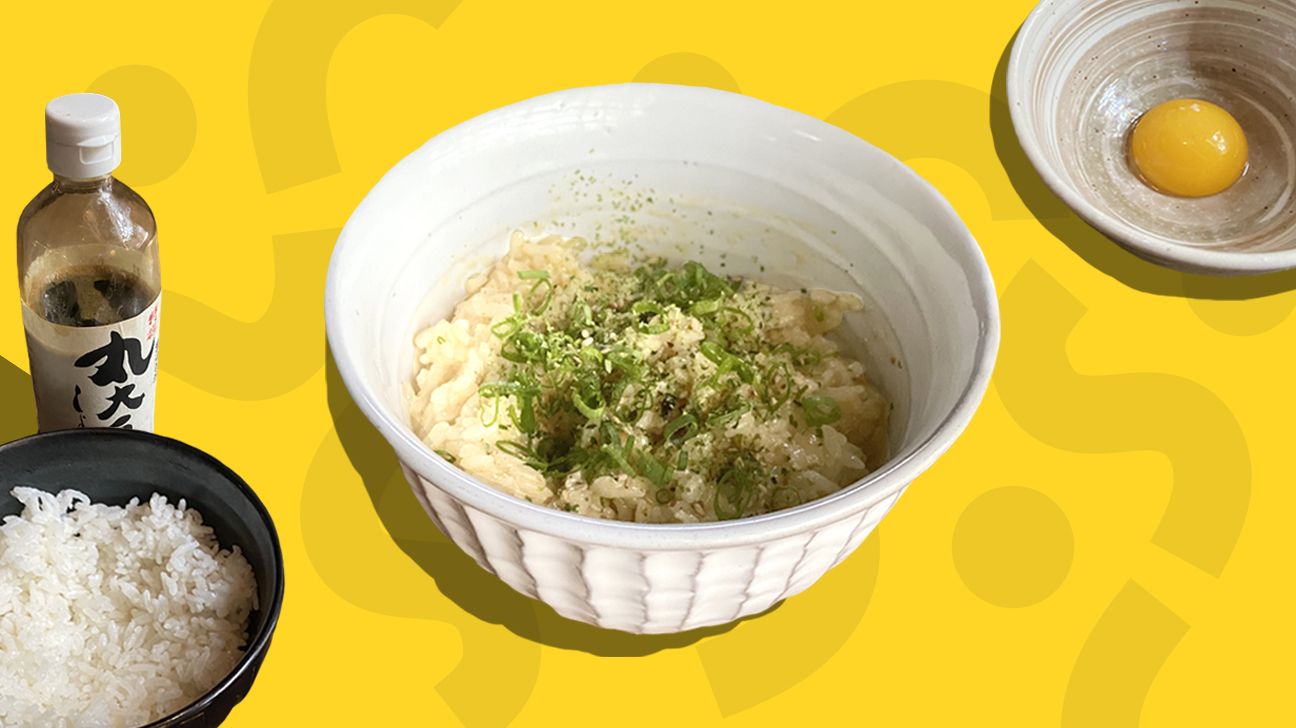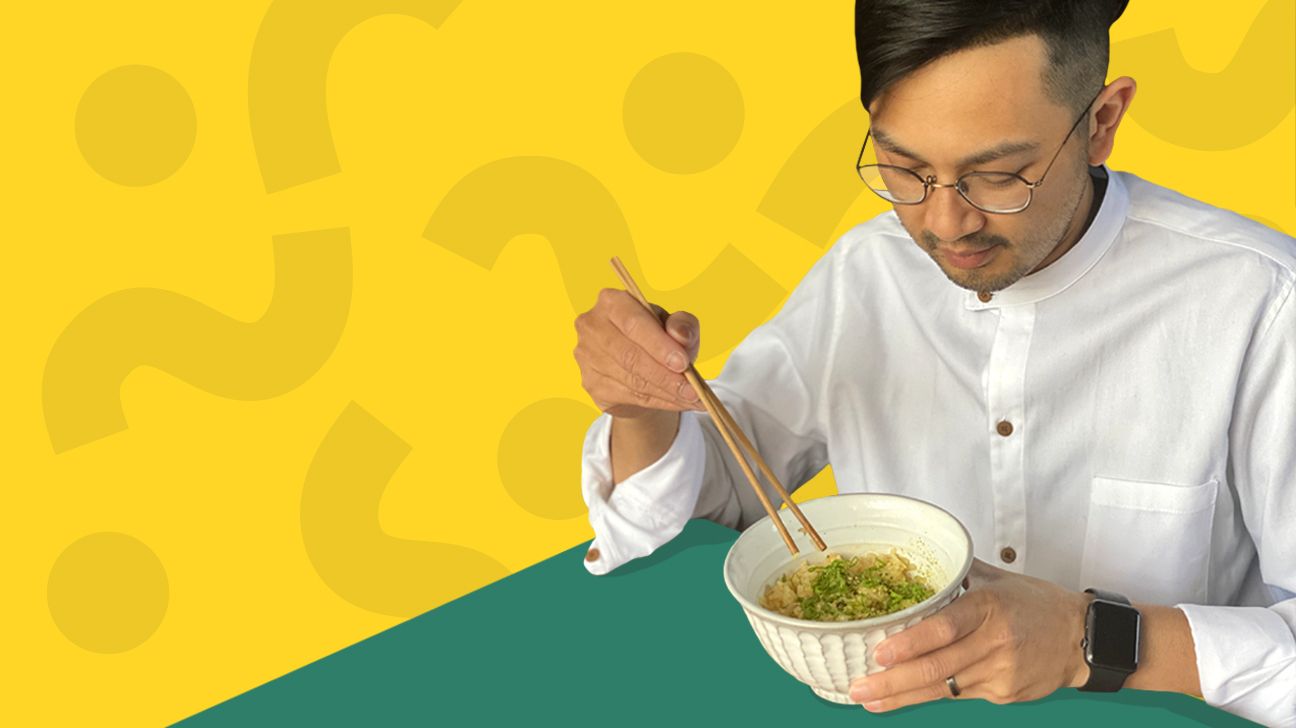
“Have you ever had tamago kake gohan?” Tim asked.
Like millions of other people, we were inside on a Sunday morning, unable to meet friends for brunch or sit in our favorite local cafe for a weekend meal. To make up for lost moments, we whipped up dishes in Tim’s kitchen, experimenting with recipes we’d never tried before in an effort to not only add a little excitement to the day but to somewhat assuage the wanderlust travel bug.
“I used to make it for breakfast all the time,” Tim continued. “It’s really simple. Basically, you take leftover rice and mix it with raw egg yolk, a little soy sauce, and sesame seeds.”
Tamago kake gohan is sneaky in its simplicity. Sticky sushi rice — or in our case, leftover rice from another dish — is heated up until slightly tacky. Over this bowl of rice, crack open an egg and drop the raw yolk (or whole egg) on top of the rice.
Add a dash of soy sauce to taste and then dust the whole thing with as many sesame seeds as you like. Whip the mix around with a fork and dig in.
“Did you add butter? It tastes buttery,” I asked.
“Nope. That’s the yolk and the sesame seeds,” Tim said.
Intrigued to try to learn more about this dish, I discovered that for something that only has three ingredients, its history and versatility are decidedly more complex.
According to Tofugu, a Japanese language learning site, Japan’s first war reporter, Ginko Kishida (1833 to 1905), is credited for popularizing this dish. In true culinary creativity, he dumped a raw egg or two on top of rice and loved it so much that he began urging everyone he met to try the dish.
“It’s one of my favorite dishes. This is something I grew up with, and sometimes the simplest dishes are the best,” says Wakana Sebacher, who opened Tamashii Ramen House, a Japanese soul food restaurant in Oklahoma City with her husband. “At one point, tomago kake gohan became trendy, and that’s when the specialty soy sauces came. But, really, you can use any high quality soy sauce.”
But according to many, it’s the special soy sauces that make the dish. The original sauce is known as “Otamahan,” and was created in a village, now known as Yoshida Town Unnan City in Shimane prefecture in 2002. It’s sweeter and more mellow than the soy sauce you might be used to. Japan now boasts of more than 50 different tamago kake gohan specific soy sauces.
“It’s always the first dish I eat when I go back to Japan,” says Sebacher. “It hasn’t been popular in America, because of the raw egg. But, if you haven’t tried it, you’ll be surprised how good it is.”

The beauty of such a simple recipe is that it can be dressed up for any occasion. At Tamashii, Sebacher’s husband Matthew, who serves as head chef, likes to whip the egg whites up first until they become frothy and airy. After adding the egg whites to the hot rice, he tops the dish with the raw egg yolk.
“It’s like your mother’s casserole. Everyone has their own way of making it,” says Sebacher. “People make it with kimchi. Sometimes they use nato, which is fermented soybeans. Sometimes they add fish and a bowl of miso soup. Other people will marinate the yolk in soy sauce and mirin, which is a kind of syrup.”
There are tamago kake gohan recipe books in Japan, which include a different recipe for each day of the year. Want to time your prep to a song? Japanese iTunes has a tomago kake gohan app that includes a special song you can sing as you work.
If you can, Sebacher recommends using the most high quality ingredients to let every bite shine. But if there’s one ingredient you don’t want to swap, it’s the short-grain Japanese rice.
“The fragrance is different than regular rice, and it’s a little more starchy,” says Jeff Chanchaleune, chef and owner of the Japanese fusion restaurant Gun Izukaya and Goro Ramen in Oklahoma City. “I would also recommend using organic, cage-free eggs that are as fresh as possible.”
Ingredients
- 1/2–1 cup cooked Japanese short-grain rice
- 1 raw egg
- 1 tablespoon sesame seeds (or more if you want)
- Dash of soy sauce (recommended Otamahan) to taste
Directions
Cook the rice or heat up leftover rice. Crack the egg over the rice. Use the entire egg or just the yolk, depending on your preference. Add soy sauce and sesame seeds to taste. Stir and eat.
Optional add-ons:
- Furikake rice seasoning (try the Marumiya Furikake Rice Seasoning)
- Sliced scallions or green onions
- Kimchi
- Seaweed flakes
- Katsuobushi (bonito flakes)
- Kombu (kelp)
- Tarako (cod roe) and mentaiko (spicy pollack roe)
According to Wakana, it’s a bit sweeter and more mellow than regular soy sauce. It’s brewed with whole soybeans, but has the natural sweetness of coarse sugar and uses pole and line dried bonito (a type of oily fish) for added flavor.
Get pasteurized eggs
While hot rice may “cook” the egg a little bit, it’s still recommended to use pasteurized eggs for health reasons. The United States Department of Agriculture does not recommend the use of unpasteurized eggs in any dish that uses raw egg as an ingredient. Yes, those backyard chicken eggs are the best-tasting of eggs, but in this case, go ahead and play it safe.
Heide Brandes is an award-winning journalist and travel writer from Oklahoma City who moonlights as a bellydancer and medieval reenactor. Her worlds of writing, wiggling, and weapons collide on Instagram at @heidewrite.
